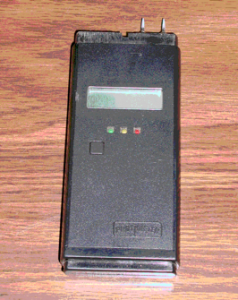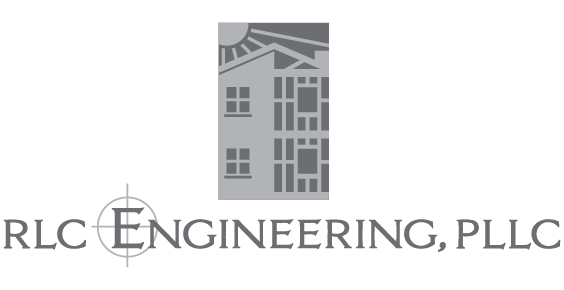
One type of wood moisture meter. The pins are pressed into the wood to obtain a reading.
Wood Moisture Content (WMC) is often used as an indicator of decay problems in houses. This document describes the meaning and use of readings from a wood moisture meter.
The moisture content of wooden substructure members is routinely being disclosed in the closing process of real estate transactions. These WMC readings are usually provided by pest control operators, and are included in the “termite letter” (form CL-100 Official South Carolina Wood Infestation Report). Wide-spread and often extensive moisture damage occurs in residences across the state of South Carolina and elsewhere in the Southeast due to the region’s warm, humid climate.
Wood Moisture Content is the weight of water in a piece of wood expressed as a percentage of oven dry weight of wood. Fresh cut trees can have a wood moisture content over 200%, while completely dried wood will have a wood moisture content of 0%. Wood in buildings usually has a wood moisture content of 5% to 15%.
WMC Scale’s Meanings:
Below 12% – Readings in this range are common to kiln or oven dried woods and furniture grades of wood, and represent dry conditions. Most interior wood is in this range.
12% – 16% – Readings in this range are common to lumber during construction, air dried lumber and “healthy” residential substructures (beneath first floor in crawl spaces). These are typical readings for exterior wood.
16% – 20% – Readings in this range indicate a possible elevated level of wood moisture. Such readings should alert the homeowner to look for a source of excess moisture. The excess moisture source should be corrected if found.
20% – 28% – Readings in this range indicate that conditions are border-line for decay. Surface molds may develop. The excess moisture source should be corrected immediately, and monitored until the WMC returns to the 12-16 range.
28% and above – Readings in this range are often accompanied by decay damage. Substructures with WMC in this range may show decay or rot in floor joist, sills, and subflooring. Repair is often required when WMC readings are in this range.
Wood moisture content between 0% and about 28% is dependent upon the relative humidity (RH) of the air. As the air’s RH increases, so does the moisture content of any wood exposed to the air. Wood exposed to air with a RH of about 90% will reach a Wood Moisture Content of about 20%. Above 90% RH or 20% WMC, mold can grow on the wood.
Decay fungi need liquid water to grow. Once wood is dried below about 28% WMC, water is not available to support decay, unless the wood is exposed to liquid water. This water may come from condensation, roof leaks, plumbing leaks, or contact with the soil. If decay or WMC readings over 28% are present, find and fix the sources of liquid water quickly.
WMC of framing members in a crawl space will usually be lowest in late winter and highest in late summer. If low WMC readings were obtained during the winter, and other signs of high moisture levels are present, obtain additional readings during the summer.
Other signs of high moisture readings include surface mold, evidence of water flows in the crawl space, evidence of water stains or evaporation from foundation walls and columns, evidence of condensation on ducts and evidence of water drops impacting the soil under ducts.








